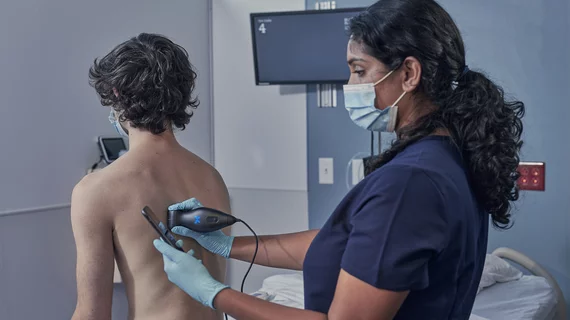Hospital organization sees impressive returns from POCUS integration
Point of care ultrasound (POCUS) helped one organization improve workflow efficiency and increase diagnostic accuracy all while boosting revenues.
The University of Rochester Medical Center has been able to successfully deploy hundreds of POCUS devices accompanied by an ultrasound enterprise platform across 64 academic departments and clinical programs since 2021. The medical center—which partnered with Butterfly Network, a digital health company that develops POCUS devices and software to bring ultrasound technology to the bedside—detailed how they were able to improve patient care and clinical workflows with the help of POCUS in a new academic paper published in the Journal of Clinical Imaging Science on Sept. 16.
“Point-of-care ultrasound has emerged as a cost-effective diagnostic tool that significantly augments physical examinations,” corresponding author of the paper David Waldman, with the Department of Imaging Sciences at the University of Rochester, and colleagues wrote. “Positioned as an extension of traditional examination methods, particularly appealing to the upcoming generation of clinicians, it holds promise in potentially replacing the stethoscope in various medical assessments and procedures.”
Since the project started, nearly 50,000 scanning sessions have been completed, resulting in over 175,000 images and 15,524 finalized reports. POCUS also enabled earlier detection of numerous ailments, such as bladder tumors, cholecystitis, pneumonia, pleural effusions, endocarditis, fluid overload and more. So far, the organization has recorded a 116% increase in hospital charges owed to the POCUS system, “underscoring the tangible impact of POCUS integration,” the authors noted.
“Our phased deployment of Butterfly devices and Compass software has yielded impressive clinical and administrative results at URMC to date. URMC is proud to be at the forefront of the wide-scale deployment of innovative point-of-care ultrasound technology, and we believe it shows promise as the right care model for the medical community at large,” Michael F. Rotondo, MD, CEO of the URM Faculty Group and senior VP of URMC, said in a statement on the findings.
The case study highlighted some issues with implementing POCUS into clinical workflows; More experienced providers were less willing to adopt new procedures, and many expressed legal concerns stemming from the risk of missing an important finding, which is a universal concern in radiology in general, the group noted.
Learn more about the project, including how those involved believe POCUS will impact patient care in the future, here.

